A K 4 7
7,62-mm Avtomat Kalashnikova (AK)

-KALASHNIKOV PROJECTS PAGE 21-
BLUE STEEL: RECREATING A LEGEND
A finely crafted replica of the classic AK-47 displays old world quality!
I am very proud to host this exhibit of a true classic, thanks to the efforts and courtesy of Mike F., who took the time to make these images and explain in his own words the history and motivation for his build. As can be seen here, his work has paid off as one really exceptional rifle has been created. Please take a few minutes and study the extra detail in the workmanship. The final product is a result of the efforts of several men who we wish to recognize here (see credits). If you see something here you like, be sure to contact them for more information on their services.
OWNER: Mike F.
E-MAIL: ra39@comcast.net
RECEIVER & ASSEMBLY: Firing Line
ENGRAVING: Marshall Arms
BLUED FINISH: Checkmate Custom
TEXT & IMAGE CREDITS: Mike F.
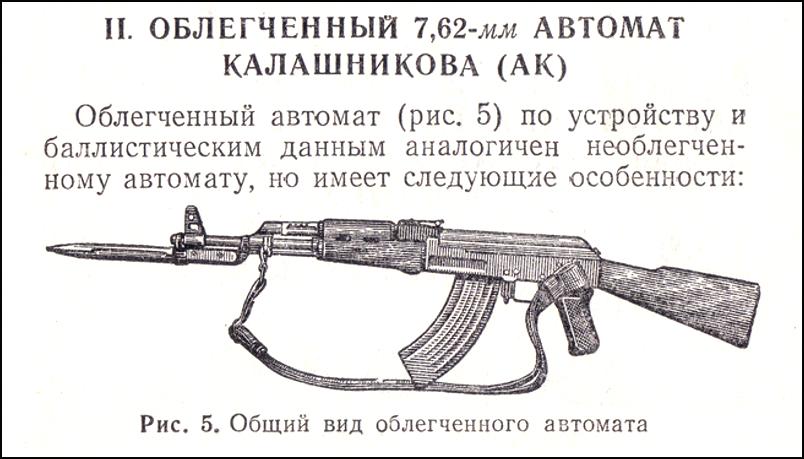
A "LIGHTWEIGHT" KALASHNIKOV IS INTRODUCED IN 1953
According to the book "Kalashnikov Arms" (1997) this version of the AK47 was approved in 1953 and was formally introduced in the “Small Arms Manual Supplementary” (1955) as the “7.62mm Light-Weight Kalashnikov Assault Rifle (AK)”. A new bayonet and light weight magazine were also issued with this version of the rifle.
Today it’s difficult for us to think of the milled receiver Type 3 (as it’s commonly known in the West) as being light weight with its weight being about 1.1 pounds (0.5 kg) heavier (with an empty magazine) than the now more common stamped-receiver AKM. But at the time it was introduced the Type 3 was about 0.9 pounds (0.4 kg) lighter than the milled receiver Type 2 rifle, and about 1.1 pounds (0.5 kg) lighter than the original stamped receiver AK47 (Type 1 in the West).

THE FIRST AK47 IS EXAMINED BY THE US ARMY
The project rifle shown in the photos was assembled in the US as a semiautomatic rifle from imported and US-made parts. To some extent the final outcome of the project was determined by the characteristics of the available parts. In the past few years it has been extremely difficult to find original finish Russian stock sets for the AK rifle in mint condition. The stock set is a mix of hardwood buttstock & laminated handguards/pistol grip with a finish of the same type and color.

The mix of hardwood buttstock and laminated handguards and pistol grip matches the photo of the rifle presented on page 115 of “The AK47 Story” by Ezell as the first AK rifle to be obtained by US Army Intelligence in 1956. The project rifle barrel assembly was purchased in what appeared to be new condition with a blued finish of a quality that is comparable to commercial rifles sold in the US. Since the barrel assembly had such a striking appearance, and the rifle was being assembled as a collector piece and not a field rifle, the decision was made to complete the rifle as a copy of an early example of the Type 3 AK with a blued finish.
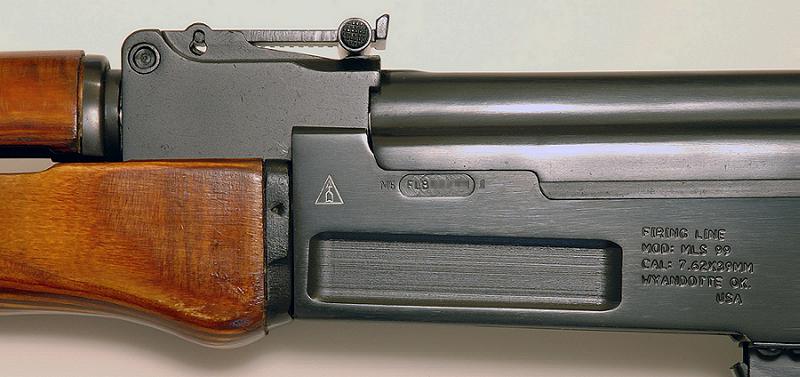
US MADE TO SOVIET STANDARDS
The only milled AK-type receiver commercially available in the US is manufactured by The Firing Line of Wyandotte, Oklahoma. These receivers enjoy a reputation of being well made and of having excellent functionality. They are also offered in a threaded version that allows the use of the barrel in its original form. However, cosmetically the receivers offer several challenges to the builder that wishes to assemble a relatively accurate copy of a Russian Type 3 AK rifle. The major issues encountered during this project were the standard selector markings, the location and size of lettering used for the manufacturer’s information, and the size and location of a flying eagle logo. Other less noticeable cosmetic issues are the dimensions and depth of the lightening cuts, the manner used to engraving the serial number, the integral lower buttstock mounting tang (as opposed to the separate lower tang piece that is riveted on to authentic Type 3 AK receivers). The receiver used for the project rifle was specially ordered to be produced without the standard selector markings so that the appropriate Russian letters could be engraved in their place. The other cosmetic issues simply had to be accepted.
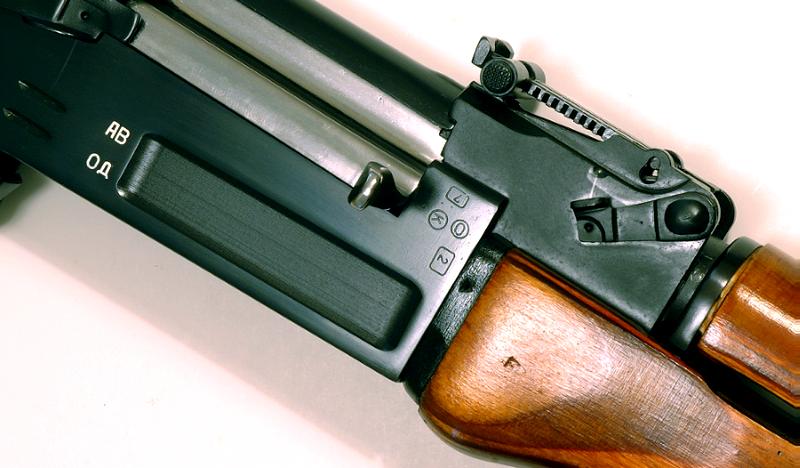
"ACCURIZING" TAKES ON A WHOLE NEW MEANING
Additional work on the receiver consisted of the appropriate selector markings, proof marks copied from a Russian receiver stub, the installation of the slot for the receiver-mounted sling swivel, and a copy of the Izhevsk arsenal stamp. The additional receiver work was performed by Marshall Arms of Tucson, Arizona. The rifle was assembled by The Firing Line. After assembly and test firing the rifle was blued by Checkmate Custom of Brooksville, Florida.
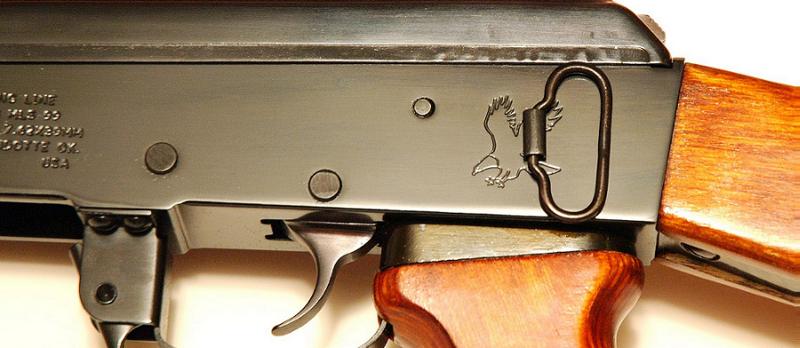
Since it took nearly 3 years to accumulate the parts and assemble the project rifle, there was ample time to collect accessories for it. The photos show examples of many of the period accessories that were collected. The 5-pocket magazine pouch is constructed with both a shoulder strap and belt loops. Both it and the square oil bottle are depicted in the 1952-dated Russian AK manual. The side ribbed, light weight steel magazines were introduced with the Type 3 AK and the examples shown are original Russian blued-finish magazines. As seen in one photo, the rifle sling is a 1954-dated Russian example. A period example of a Soviet military identification booklet is also shown. In the photos the rifle is resting on a padded cold weather jacket and a shelter half/rain cape. Also displayed with the rifle is ammunition with a copper-washed finish which is proper for the time period.
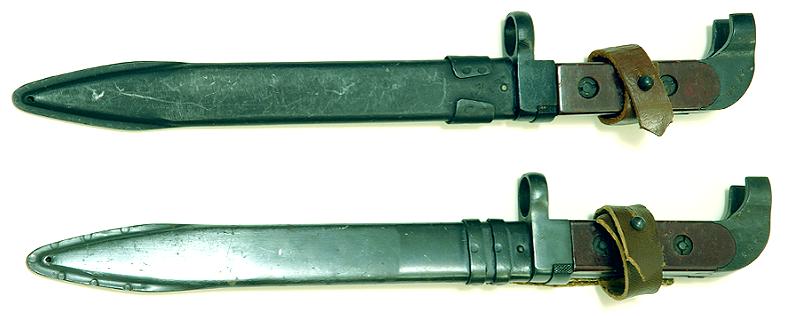
VARIATIONS OF THE BAYONET
A side by side photo of two variations of the Russian Type 3 AK bayonets. One variation is blued and has 2 thin metal bands used to attach the belt hanger, and the other is painted black and has one thick band that doesn’t go all the way around the front of the scabbard. Both variations of the bayonet have been observed with both blued and painted finishes. The 2 thin metal banded variation appears in the 1955 AK manual supplement and the other wider-banded version doesn’t.
 See our AK-74 Production Variations Study by clicking the link above. See our AK-74 Production Variations Study by clicking the link above.
 AK Projects Section Index
AK Projects Section Index
|










